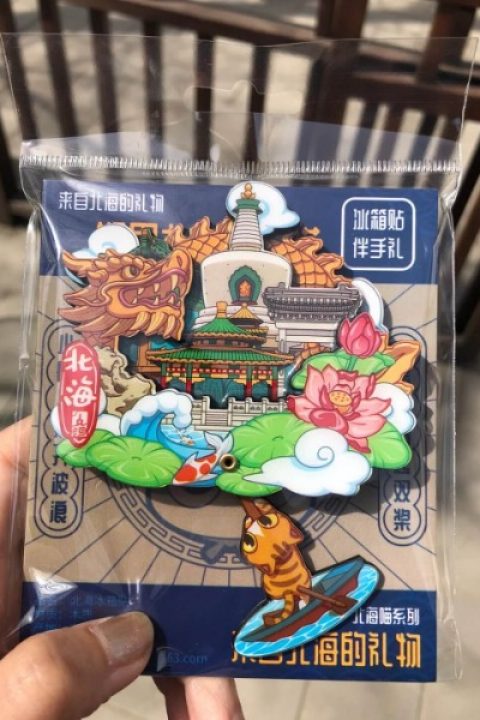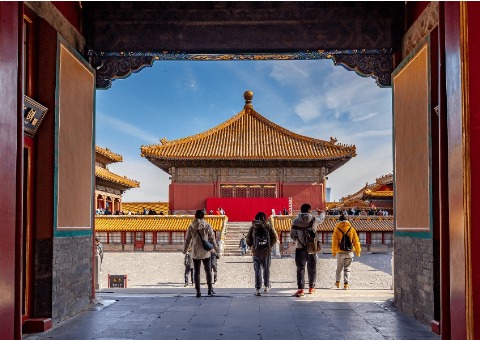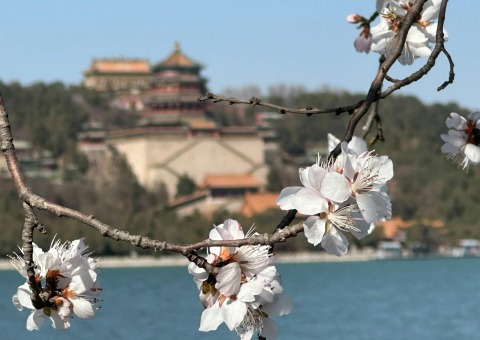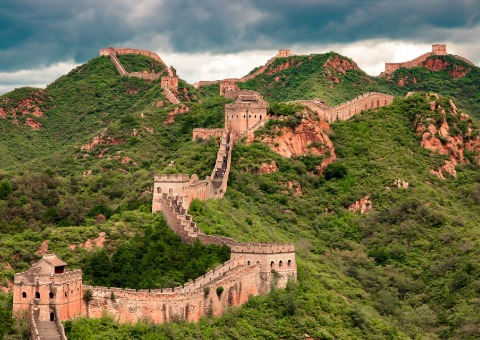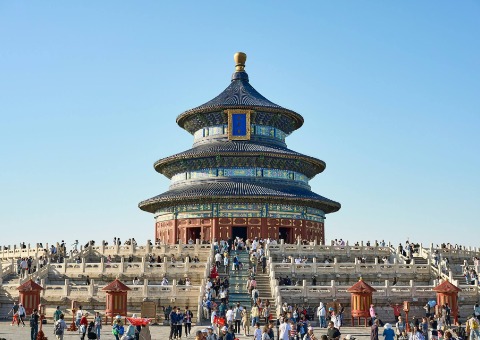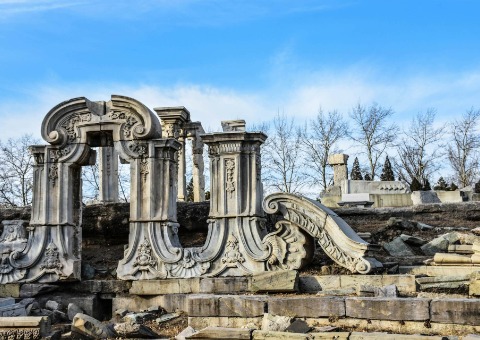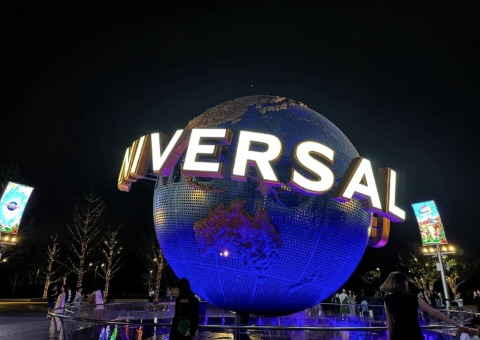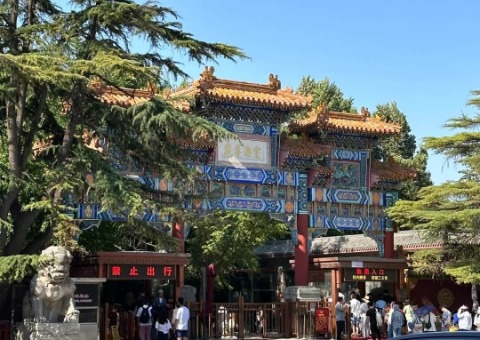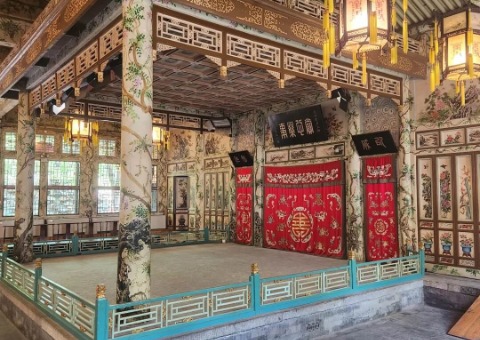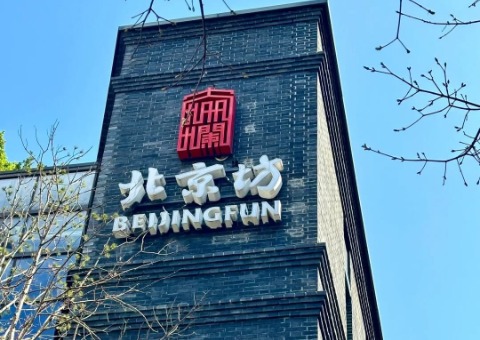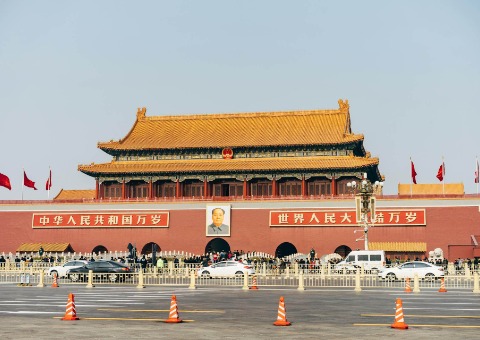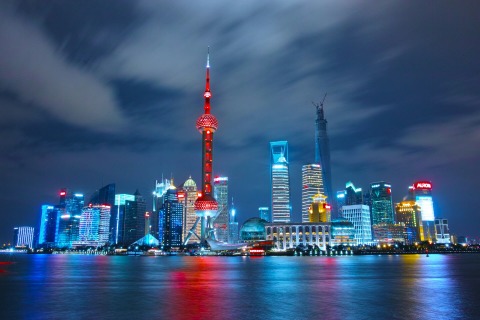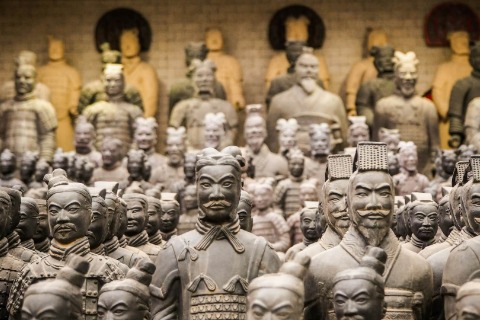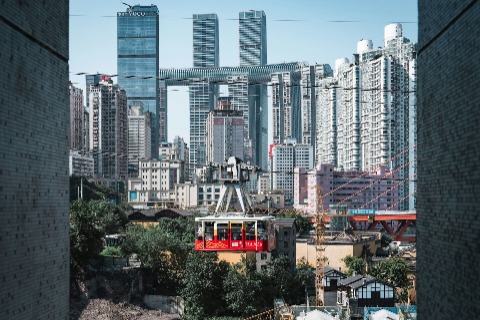Beihai Park
The oldest existing royal garden in China
Beihai Park is one of China’s oldest, best-preserved, and culturally richest classical royal gardens. Located in the heart of Beijing, it is bordered by Jingshan to the east, Zhongnanhai to the south, and Shichahai to the north. The park’s development spans several dynasties—Jin, Yuan, Ming, and Qing—reflecting nearly a thousand years of Chinese history and culture. Beihai Park is also home to Beijing’s largest lake, with its water primarily sourced from the Miyun Reservoir. The park boasts a rich array of flora and fauna, including cypress, arborvitae, and white pines, as well as endangered species like the Mandarin duck and the autumn sandpiper.
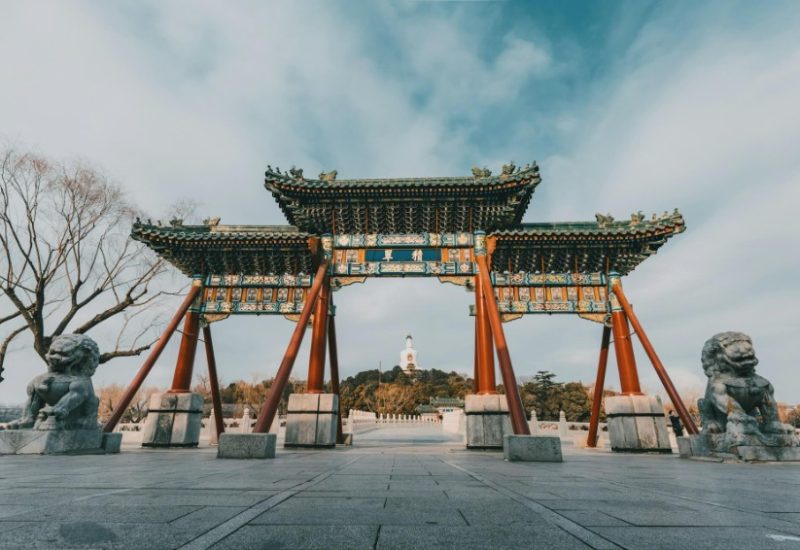
Table of Contents
We rented a cruise boat and traveled through the beauty of the North Sea. The warm breeze was soothing on my face. The scenery of green trees and flowers on both sides of the sea was mesmerizing. Suddenly a towering white tower appeared in the distance. It was as white as jade, as if it were a white jade bottle. It is the symbol of Beihai Park - White Pagoda.
Tourist Diary 1
Highlights
Yong'an Temple (Chinese name: 永安寺)
Yong’an Temple was founded in the eighth year of the Shunzhi era (1651) during the Qing Dynasty. Its unique architectural style blends elements of Tibetan and Han Buddhist traditions, showcasing the grandeur and refinement of Qing Dynasty royal gardens. The temple’s roofs are covered with colorful glazed tiles, and the ridges are adorned with dragon carvings, reflecting its imperial splendor.
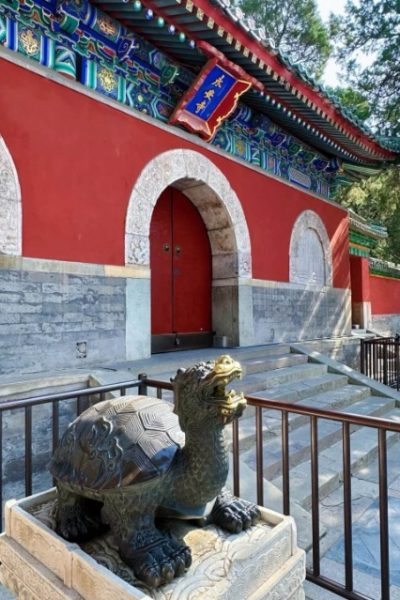
White Pagoda (白塔)
The White Pagoda is a Tibetan-style lama tower composed of three parts: the base, the body, and the top, with a total height of 35.9 meters. It is a classic example of royal Buddhist pagodas in China and symbolizes the introduction of Tibetan Buddhism into the imperial capital of China, marking the integration of Han and Tibetan Buddhism during the Qing Dynasty. The pagoda’s architectural structure is meticulously crafted, with a brick and wood core covered in white glazed tiles. Each level of the pagoda features windows and doors for visitors to explore and view. Surrounding the White Pagoda are several small courtyards and gardens, which enhance the aesthetic and atmosphere of the surroundings.
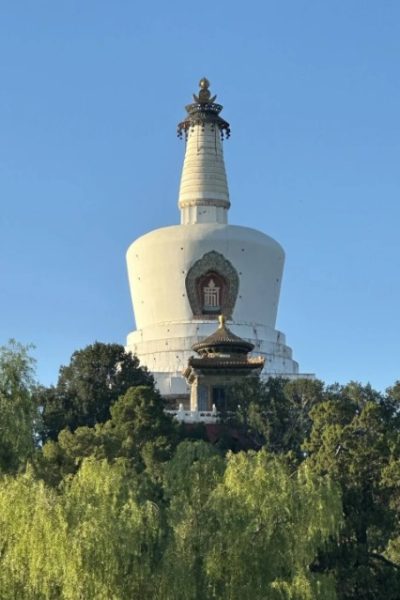
Yilan Hall (漪澜堂)
Yilan Hall, built in 1751, is a masterpiece of traditional Chinese garden design. During the Qing Dynasty, Emperor Qianlong would come here to admire the lotus flowers in the water and enjoy ice skating performances in the winter, creating many cherished memories. The Emperor also used to fish in the lake in front of Yilan Hall and would present his catches as gifts to his officials.
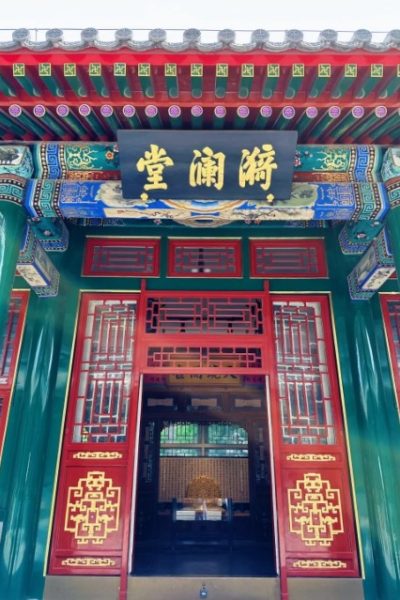
The elm trees on both sides of the road dropped elm blossoms accompanied by a faint fragrance that gave one the feeling of being in an earthly paradise. I climbed up the side hill where the road curved. The pavilion was rebuilt, but still preserved the magnificent ancient paintings. The lake in the center of the Beihai looked cozy with many swimmers rowing boats in the water. The weeping willows along the shore sway in the wind. Walking along the lake, feeling the breeze caress, the mood is extraordinarily comfortable.
Tourist Diary 2
Five-Dragon Pavilion Dock (五龙亭码头)
The Five-Dragon Pavilion Dock consists of five pavilions and serves as a place for people to enjoy views of the White Tower and the picturesque scenery of Beihai Lake, as well as to relax. In the evening, the dock takes on a deeper, more solemn appearance under the lights, with the lake reflecting the pavilions like a deep blue mirror.
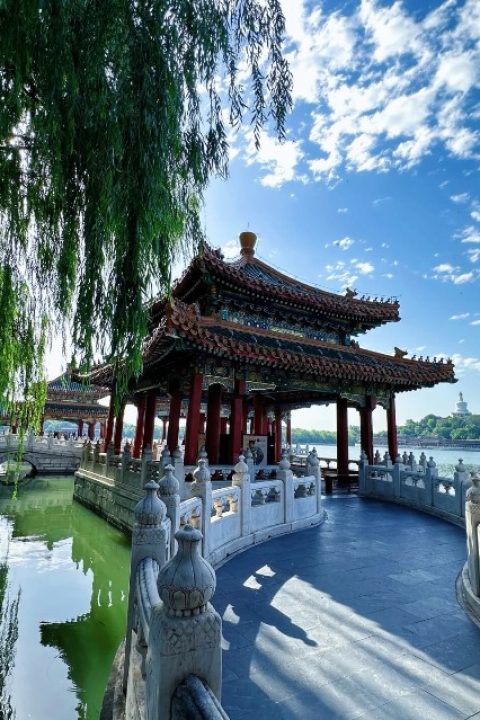
Minor Western Heaven (小西天)
Minor Western Heaven is a historically rich royal garden located in the northwest part of Beihai Park. During the Qianlong Emperor’s reign in the Qing Dynasty, it was extensively expanded and renovated to become a comprehensive attraction that combines Buddhist culture, garden art, and royal leisure. The main building of Minor Western Heaven is the Hall of Ultimate Bliss, the largest existing pavilion-style wooden structure in China. The architectural complex not only demonstrates traditional Chinese landscaping techniques, such as the arrangement of rocks, water features, and plants to create a tranquil and harmonious environment, but also integrates Buddhist culture with the leisure needs of royalty.
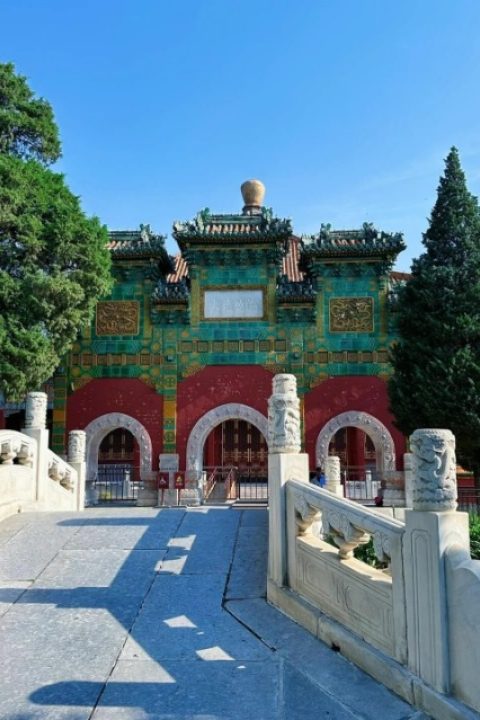
Kuaixue Hall (快雪堂)
Kuaixue Hall is renowned not only for its rich historical and cultural significance and valuable calligraphic inscriptions but also for its exquisite garden design and layout, which earned it the UNESCO Asia-Pacific Heritage Award for Cultural Heritage Conservation. This courtyard-style building features a multi-eaved flower gate and scenic windows. It includes covered walkways, corner pavilions, and connecting corridors that link various halls, creating a cohesive courtyard layout. The design cleverly integrates different tree and flower species to ensure that the courtyard is filled with blossoms and fruits in three seasons and remains evergreen throughout the year. Kuaixue Hall is not only a crucial site for studying ancient Chinese calligraphy but also an excellent destination for experiencing traditional Chinese garden culture.
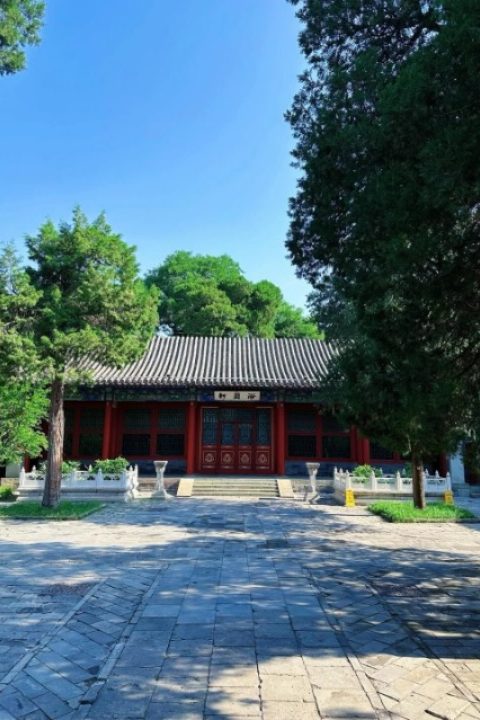
Nine Dragon Wall (九龙壁)
The Nine Dragon Wall is a colorful glazed brick screen wall that features the image of 635 dragons. Its dragon designs, colors, and overall rhythm and harmony are remarkably refined, making it one of China’s most significant and valuable artworks. Visitors can get a close look at the intricate carvings on the wall.
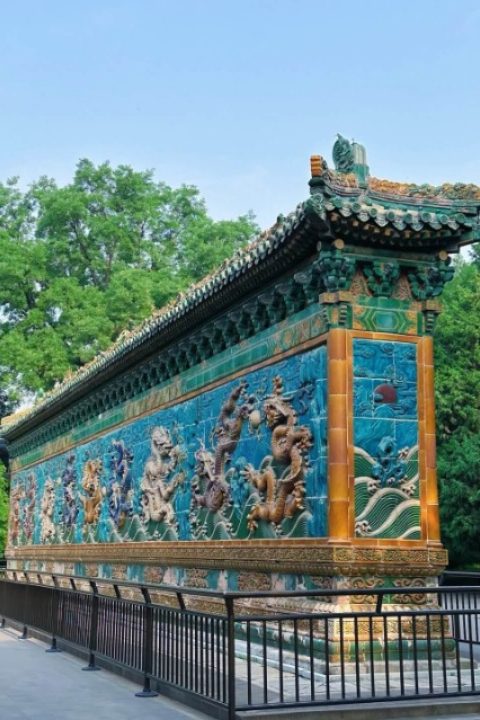
Western Paradise (西天梵境)
The architecture of Western Paradise showcases the exquisite craftsmanship of Ming Dynasty architecture. Notably, the main building is entirely constructed from golden silk nanmu, highlighting its ancient and elegant charm. Inside the hall are statues of the Three Buddhas and the Eighteen Arhats, reflecting a profound cultural heritage.
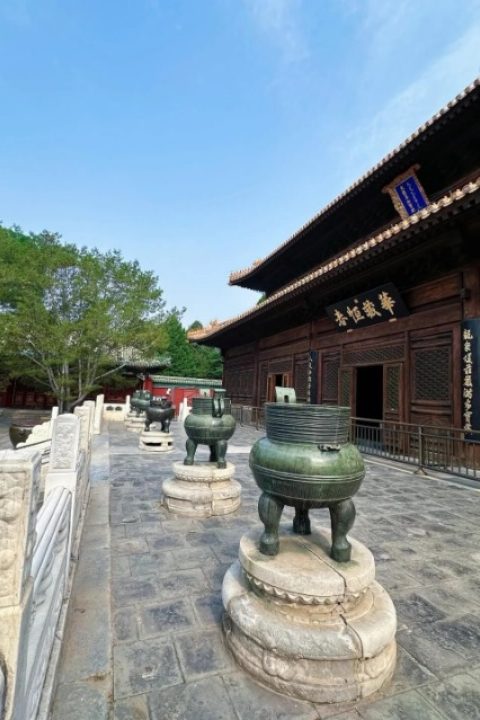
My kids spent the weekend sketching in Beihai Park. I just wandered in this big park by myself, I can't tell you how cozy it is. Autumn wind, willow, everything looks so vibrant. The park is crowded with tourists, and foreign tour groups, many European tourists scrambling to take pictures at each landscape, not willing to leave. Numerous beautiful women dressed in ancient costumes in the shooting art photos.
Tourist Diary 3
How to Get to the Beihai Park
By Bus
- Passengers arriving at the South Gate or Southwest Gate of the park can take buses 5, 101, 103, 109, 124, 685, 614, or 619 to the “Beihai Park(北海公园)” stop.
- Passengers arriving at the East Gate can take buses 5 or 609 to the “Xibanqiao(西板桥)” stop.
- Passengers arriving at the North Gate can take buses 13, 42, 107, 111, 118, 609, 701, or 623 to the “Beihai Park(北海公园)” stop.
By Subway
- Take Line 6 of the subway to Beihai North Station(北海北站). After exiting from the B Northeast Exit, it’s a 15-minute walk to the North Gate of Beihai Park.
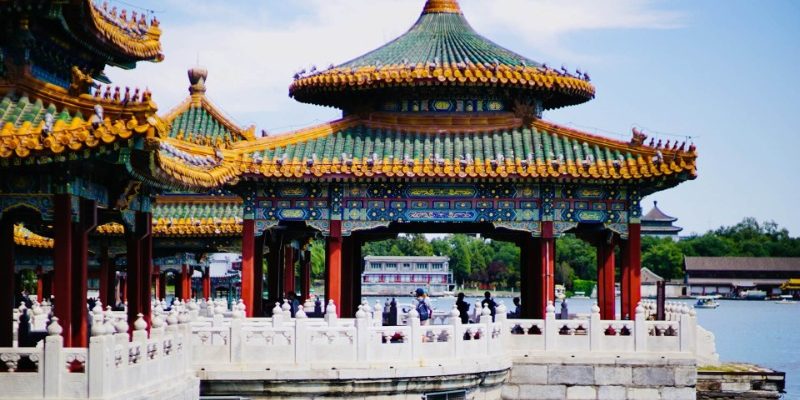
Attraction Information
Hours
- April – October: 06:00 – 21:00 (last entry at 8:30 PM)
- November – March: 06:30 – 20:00 (last entry at 7:30 PM)
Admission
- Tourist Peak Season (April – October): 20 CNY ( ≈ 2.75 USD)
- Tourist Off-Season (November – March): 15 CNY ( ≈ 2.05 USD)
Prohibited Items
- Do not bring professional cameras for photography to avoid any unnecessary issues during security checks.
- Pets are not allowed inside.
General Amenities
- Free restrooms
- Restaurant
- Information Counter
luggage Storage
- The luggage storage is located next to the B Northeast Exit of Beihai North Subway Station, with operating hours from 07:00 to 22:00 daily.
Today, I brought my kids to the park to play, and the weather was particularly nice. We climbed to the top of the tower, which was quite sunny. Around the tower, we also came across a cute little cat that wasn't afraid of people. The lotus flowers were all in bloom, looking especially beautiful. There were many ducks on the river, and tourists were feeding them breadcrumbs. In the river, there were also various plump grass carp and koi fish, huge in size, swimming in groups.
Tourist Diary 4
Nearby McDonald's/KFC
- KFC (Dianmen Store) 肯德基(地安门店)
178 Dianmen Outer Street - If you’re unsure about how to order at a nearby Chinese restaurant or if you’re not used to the local Chinese cuisine, you can temporarily solve your dining needs by heading to the nearby McDonald’s or KFC.
Nearby Police Station
- Beijing Municipal Public Security Bureau Xicheng Branch Beihai Park Police Station
北京市公安局西城分局北海公园派出所
1 Wenjin Street, Xicheng District, Beijing (Inside Beihai Park, north of the Forbidden City) - In China, the number to call the police is 110. If you have an emergency and need help, you can dial 110 at any time. Local police will usually arrive within minutes and will provide assistance with great care and responsibility.
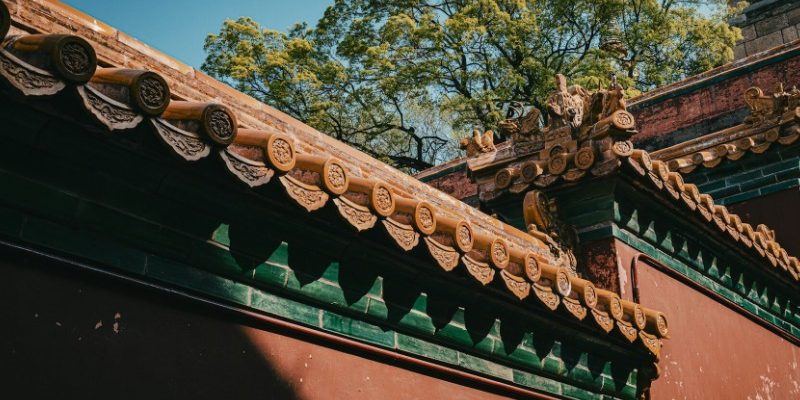
Practical Travel Tips
- There’s a Qingfeng Steamed Bun restaurant in the park where you can have lunch.
- If you want to take a boat, check the weather forecast in advance; boats won’t operate in high winds or rain.
- Beihai Park is quite large, so plan for 3-4 hours to explore it fully; wearing comfortable shoes is recommended.
- The last entry to the park’s buildings and courtyards is at 17:30 during peak season, and it’s closed on Mondays.
- If you’re not heading to Jingshan Park afterward, avoid exiting through the East Gate, as it’s hard to catch a taxi there.
Attraction Surprises
Greenhead Duck Plush Keychain (绿头鸭挂件)
Beihai Park sells various duck keychains made of different materials, including wood, wool felt, and plush. Prices range from 49 to 149 RMB (approximately 7 to 21 USD).
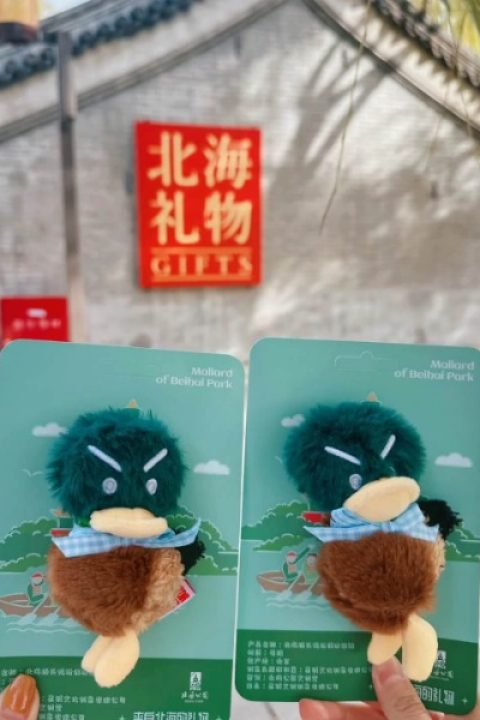
Beihai ice cream (北海公园文创雪糕)
Beihai Park offers a variety of creative ice creams, but the white pagoda-shaped ice cream is exclusively available at the “Cantan(蚕坛)” cultural shop near the North Gate. Other shops or kiosks in the park have different shapes of ice cream.
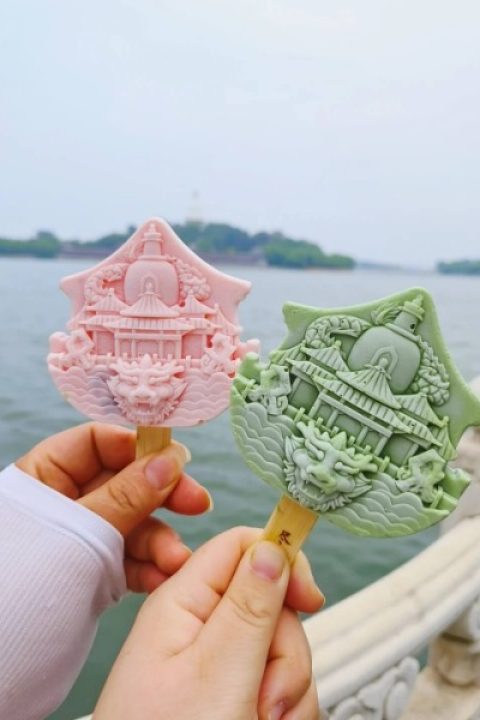
Chinese-style fridge magnets (北海公园文创冰箱贴)
Visitors can purchase souvenir fridge magnets at the cultural shop, located on the right side after crossing the bridge at the South Gate of Beihai Park, marked by a prominent red sign that says “Beihai Gifts(北海礼物).” Additionally, if entering from the North Gate and heading east then south, you’ll encounter three cultural shops along the way: the Cantan(蚕坛) cultural shop, the Beihai Royal Post Station(北海皇家邮驿), and the cultural shop(文创堂), which focuses on a variety of cultural products. Prices range from 30 to 150 RMB (approximately $4 to $22).
